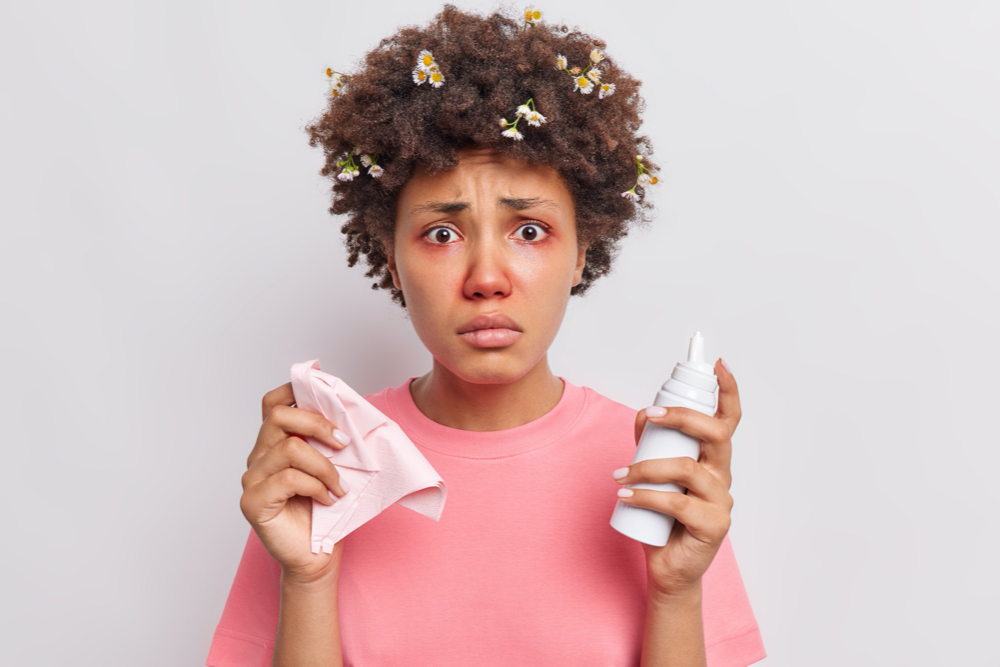- Fast results
- 4,000+ locations
- 4.8 star rating
Need Help? (888) GET LABS


When spring is just around the corner, pollen starts to fly in the air like a fine powder. You can ignore this phenomenon all you want, but if you have tree pollen allergies, that’s the last thing you would want to do.
A tree pollen allergy happens when your body recognizes harmless pollen as a threat or allergen. As a result, the immune system will attack it, prompting inflammation and other physiological effects that lead to pain and discomfort.
These immune responses can even lead to a life-threatening condition called anaphylaxis if not treated.
Unfortunately, tree pollen allergy is pretty common in some states in the US. Hay fever alone affects roughly 19.2 million Americans – not to mention the proximity of tree pollen allergy to some COVID-19 symptoms.
Nevertheless, knowing more about tree pollen allergy can help you get the right protection and prevention you need as early as possible.
Find out more about this type of environmental allergy in the next few lines.
Simply put, a tree pollen allergy is a condition wherein you develop allergic reactions against pollen coming from various trees nearby. This is due to your immune system mistakenly identifying pollen as a harmful invader despite its benign nature.
Naturally, the immune system works as the body’s first line of defense against the foreign invasion of pathogenic (disease-causing) attacks.
Once viruses and bacteria get inside, immune cells are released, and immunological reactions like fever and inflammation occur.
With a tree pollen allergy, the pollen, identified as an allergen, is recognized similar to a pathogen. So, the immune system will try to get rid of it, prompting symptoms like wheezing, sneezing, watery eyes, and stuffy nose.
For some people, the direct impact of a tree pollen allergy, which is hay fever, can be experienced all year long.
On the other hand, some individuals only have hay fever and other allergy symptoms during specific months, mostly during spring.
A spring season turning into allergy season is common in various states. This could be attributed to flowers and fruits growing during the said period leading to the release of a million pollen.
The spread of pollen is an integral part of the trees’ reproduction, allowing them to propagate their species. Hence, there’s a slim chance of controlling pollen dispersion, so you’ll have to focus more on preparing your health.
It helps to watch out for common trees that produce pollen allergens like the following.
Moreover, it’s also an advantage knowing which states have more environmental allergens during the season and which ones have the least. That way, you can plan your vacations or visits accordingly.
Based on the data of the Asthma and Allergy Foundation of America, places such as the following are pretty challenging to be at if you have allergies.
On the other hand, these places are considered more friendly during allergy season.
A tree pollen allergy is just like any other allergy. With the right medication, it can be treated easily. Plus, the symptoms are usually tolerable and manageable, provided that you received a proper diagnosis.
But if the tree pollen allergy is not addressed, it can potentially lead to a severe allergic reaction known as anaphylaxis.
Anaphylaxis is life-threatening and can occur within minutes of exposure to pollen. It could lead to low blood pressure, a weak pulse, airway constrictions, and incredibly itchy hives.
As soon as symptoms of anaphylaxis occur, it’s imperative to administer epinephrine through an autoinjector. If you don’t carry the said device, go to the emergency room straight to get your shot.

Symptoms of tree pollen allergy include the following.
There are two ways where your doctor or allergist can diagnose tree pollen allergies: skin prick test and blood tests.
With the skin prick test, a tiny puncture is made on your skin, followed by applying a small amount of the suspected allergen. In this case, some tree pollen.
If you are indeed allergic to the substance, you will most likely develop immunological reactions like hives, redness, swelling, and itchiness within 20 minutes.
However, the process could be a bit grueling to some. Fortunately, you can also go for environmental allergy tests, which use blood samples to screen for tree pollen allergies.
When allergy season looms in the air, it is almost inevitable to prevent an allergic reaction.
But it’s a good thing that you can easily treat tree pollen allergies with over-the-counter medications containing histamine. Moreover, you can also take the medicine weeks before the start of allergy season as a means of protection.
Aside from OTC medication, you can also opt for immunotherapy shots or tablets, deeming the pollen more harmless than it already is.
If you have hay fever or allergic rhinitis, you can use nasal sprays with corticosteroids to reduce inflammation and congestion. You can also use Neti pots and other nasal saline irrigation tools.
Furthermore, you can supplement the medication with some home remedies like drinking herbal teas with anti-inflammatory properties.
According to research, 90% of people allergic to tree pollen also develop allergies to foods that cross-react with the pollen.
Hence, it would help if you test for food allergies, especially when you are diagnosed with a particular tree pollen allergy – mainly because your susceptibility to the condition is high. And partly since the food allergies will depend on the type of pollen allergen, you are sensitive to.
For example, if your allergy trigger is birch pollen, you better avoid almonds, avocados, soy, parsnips, cherries, peaches, strawberries, apricots, fennel, parsley, fig, celery, and kiwi.
Nonetheless, it is best to avoid fruits and vegetables that could irritate your nasal cavity. This will include hot peppers, peanuts, and wheat.
Moreover, you should limit your intake of coffee, chocolate, alcohol, sugary foods, and processed foods.

With COVID variants like Omicron mimicking flu and allergies, it’s pretty common for people to panic, especially if they cannot find the distinction.
However, it’s important to understand that seasonal allergies brought about by tree pollen have limited symptoms that mostly affect congestion and the development of inflammation. This is evident with hay fever.
Moreover, while Omicron and allergies may share some symptoms, there are conditions exclusive to the COVID-19 variant, such as fever, muscle aches, and sore throat.
Overall, the best way to accurately know the difference between the two is through proper testing.
It’s also helpful to note any exposure to tree pollen prior to the symptoms. This could help you partially distinguish allergies from viral infections.
Tree pollen allergies can be seasonal or perennial. Therefore, it’s best to always be prepared by keeping your set of medications and limiting pollen dispersion in your home.
But all these preventive actions and treatment cannot be undertaken if you don’t undergo proper diagnosis.
While allergic rhinitis and other symptoms may seem similar across different types of pollen, the broad scope of the allergen will make it trickier to protect yourself in the long run.
That being said, getting tested is the best step you can take to manage your allergies. So, take the environmental allergy test and find out which tree pollen you’re allergic to.

© Copyright 2025 Personalabs. All Rights Reserved.